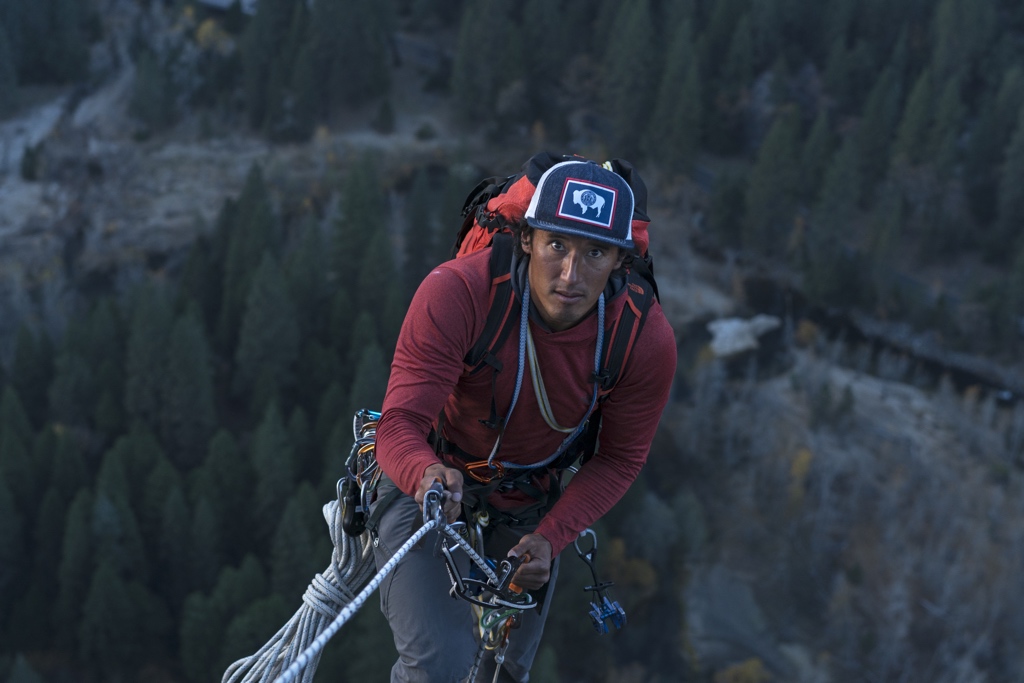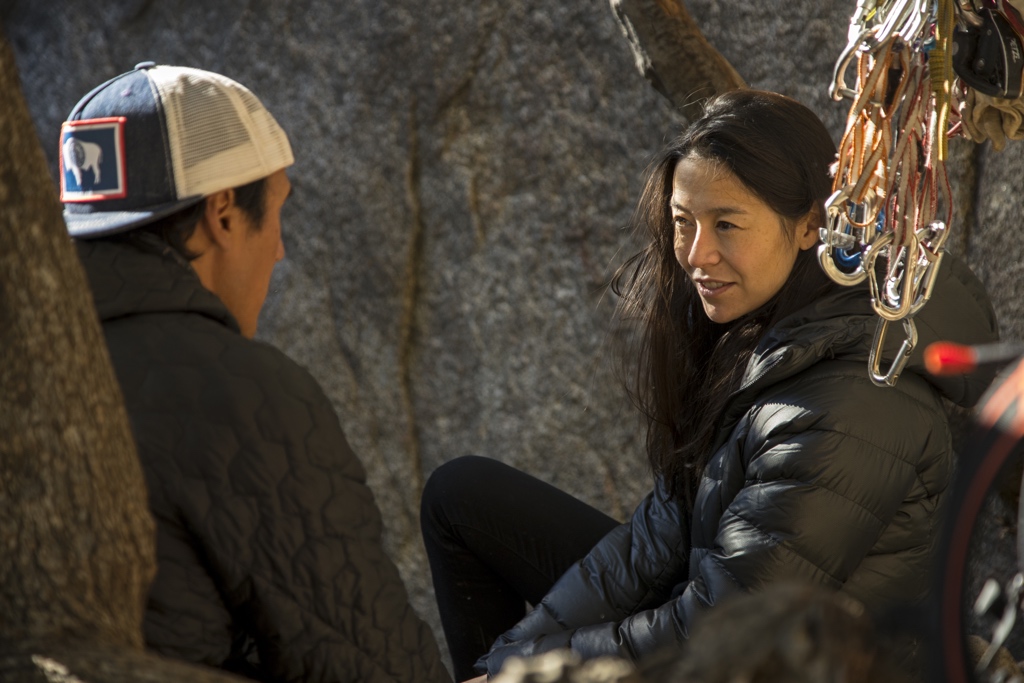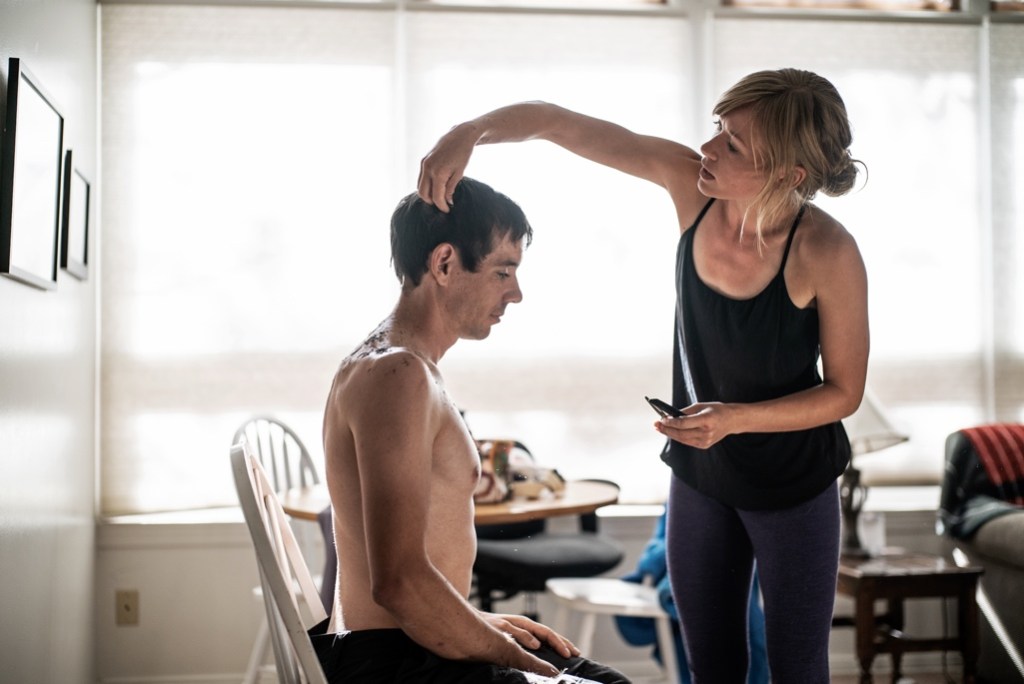Climbing films almost never get nominated for Oscars. But on Sunday, the rock climbing documentary Free Solo won the award for Best Documentary at the 91st Academy Awards.
Until fairly recently, climbing has been a relatively niche sport, at times practiced by a rare breed of athlete, on far-flung cliffs and crags that make filming particularly difficult. And although climbing provides inherent drama—the threat of failure lingering in each move—a film must offer so much more than that to capture Hollywood-level acclaim. How is the ascent distinguishable from any other ascent? Why do we care about the characters involved?
Only a handful of climbing documentaries have ever even been shortlisted or nominated for an Academy Award—so how has the Free Solo burst past the countless other memorable climbing films of this era to nab a coveted Academy Award nomination and ultimately a win? It took a timely alchemy of people and events to make a film that would get an Oscar nod.
Starting in 2007, Alex Honnold had been ticking off notable big wall free solos for several years, landing in the national spotlight following his free solo of Yosemite’s Half Dome and subsequent interview on 60 Minutes in 2012. Honnold’s extreme style and feats might be difficult for most non-climbers (and even climbers) to understand. At the same time, increasing numbers of people have been trying rock climbing for the first time, according to the International Federation of Sport Climbing. Honnold became a household name—even inspiring a new verb: “honnolding.” Epitomized by a photo Jimmy Chin shot of Honnold standing, ropeless, back to the wall on a ledge high up on Half Dome, gazing into the distance, climbers have coined the term to refer to anyone standing on a high ledge, facing away from the rock.

Jimmy Chin ascending a fixed line during the filming of ‘Free Solo.’ (Photo Credit: National Geographic/Matthew Irving)
While Honnold continued to link up one record-breaking free solo after another, and ponder his goal of free soloing the nearly 3,000-foot El Capitan in Yosemite, another fortuitous event was fomenting: the creative partnership of Jimmy Chin and Chai Vasarhelyi. As Earth-shattering as Honnold’s free solo of El Cap would be in itself, to communicate that to an audience on film would require two other unique skills. First, it would require next-level cinematography that wouldn’t interfere with Honnold’s safety—the kind of cinematography that could only be achieved by elite climbers themselves. After all, Hollywood isn’t exactly known for realistic portrayals of climbing in movies. Second, it would require a skillfully drawn character profile and story arc to reel the audience in beyond the purely sensational will-he-fall-and-die curiosity. In Chin and Vasarhelyi, that match came together.
Chin had been climbing and photographing climbing for decades, initially breaking out with a National Geographic assignment in 2002, and being part of the first American team to ski off the summit of Mount Everest in 2006. He met Vasarhelyi in 2011 while he was working on the documentary Meru about his attempts at climbing The Shark’s Fin on Meru in India with friends Conrad Anker and Renan Ozturk. Vasarhelyi, a documentary filmmaker herself, came on board to work on the film with Chin, and they later married and started a family. Vasarhelyi brought a non-climber’s perspective to Meru—and, eventually, also to Free Solo.

The directors of the film documenting Alex Honnold on his quest to free solo El Capitan in Yosemite National Park, Jimmy Chin and Chai Vasarhelyi. They’re at the base of the cookie cliff talking through production logistics. (Photo Credit: National Geographic/Jimmy Chin Productions)
“We bring a few different things to the table,” said Chin, in an interview with Shelby Stanger for a Wild Ideas Worth Living episode. “ [Chai] can be a lot more objective to the story, and while I’m an insider I can bring a lot of the nuance and understanding of the culture and the spirit of Alex’s endeavors.”
Working together, Chin and Vasarhelyi had already figured out a few things about portraying climbing on film to a mass audience. “We learned in Meru that actually you don’t have to explain very much,” Vasarhelyi told Stanger. “That also means that you lose some very precise concepts, so you don’t have to explain very much because it’s not that important to the story. If it reveals something about your character or pushes the action forward, great, but the details of how to climb—we were like, it’s really important that you understand the three hardest parts. That you understand what differentiates them, but particular moves, there’s only one move that we really had to express and explain.”
Walking the line between holding the audience’s hand and letting them figure things out for themselves was part of how the Free Solo directors set the film apart from traditional climbing films, which often assume that people watching are already versed in climbing lingo. To make a film that would be true to Honnold’s climb, but also make it accessible to a much wider audience, they needed to strike a balance that few other films had found.

Alex Honnold getting his haircut by his girlfriend Sanni McCandless before attempting his free solo of El Cap. (Photo Credit: National Geographic/Jimmy Chin)
Whereas Chin’s deep roots as a professional climber allowed him and his hand-picked crew to film the climb with authenticity and respect for Honnold’s experience on the wall, Vasarhelyi was able to see the angles of the story that non-climbers would be able to relate to. Like the complexities of his relationship with his girlfriend, Sanni McCandless.
“Sanni is from the nonfiction gods in some way,” Vasarhelyi told Stanger. “Here was this emotionally intelligent woman who is self confident enough to say, ‘This makes me uncomfortable, but I’m going to try to love you anyway. I do love you anyway.’ That was a revelation for Alex, and you see him evolve emotionally in the film, which without her, he’d be only reacting to the crew. … There are a lot of different levels to the film I think because of Sanni.”
Honnold and McCandless’s discussions about their relationship on camera brought their lives to a human level that audiences would have missed if McCandless hadn’t been part of Honnold’s life—or a part of the film. Their interactions show off the quirks of Honnold’s character: the van-dwelling minimalist who feels at home thousands of feet up a cliff but admittedly uncomfortable flirting with women.
All these factors—and I’m sure many more—add up to make a climbing documentary quite unlike any most of us have seen before. And as we watch Honnold—who wore tattered, old pants on camera for the film—pose in a borrowed tuxedo with McCandless on Instagram, and walk the red carpet, maybe we climbers feel just a little bit of extra excitement.
